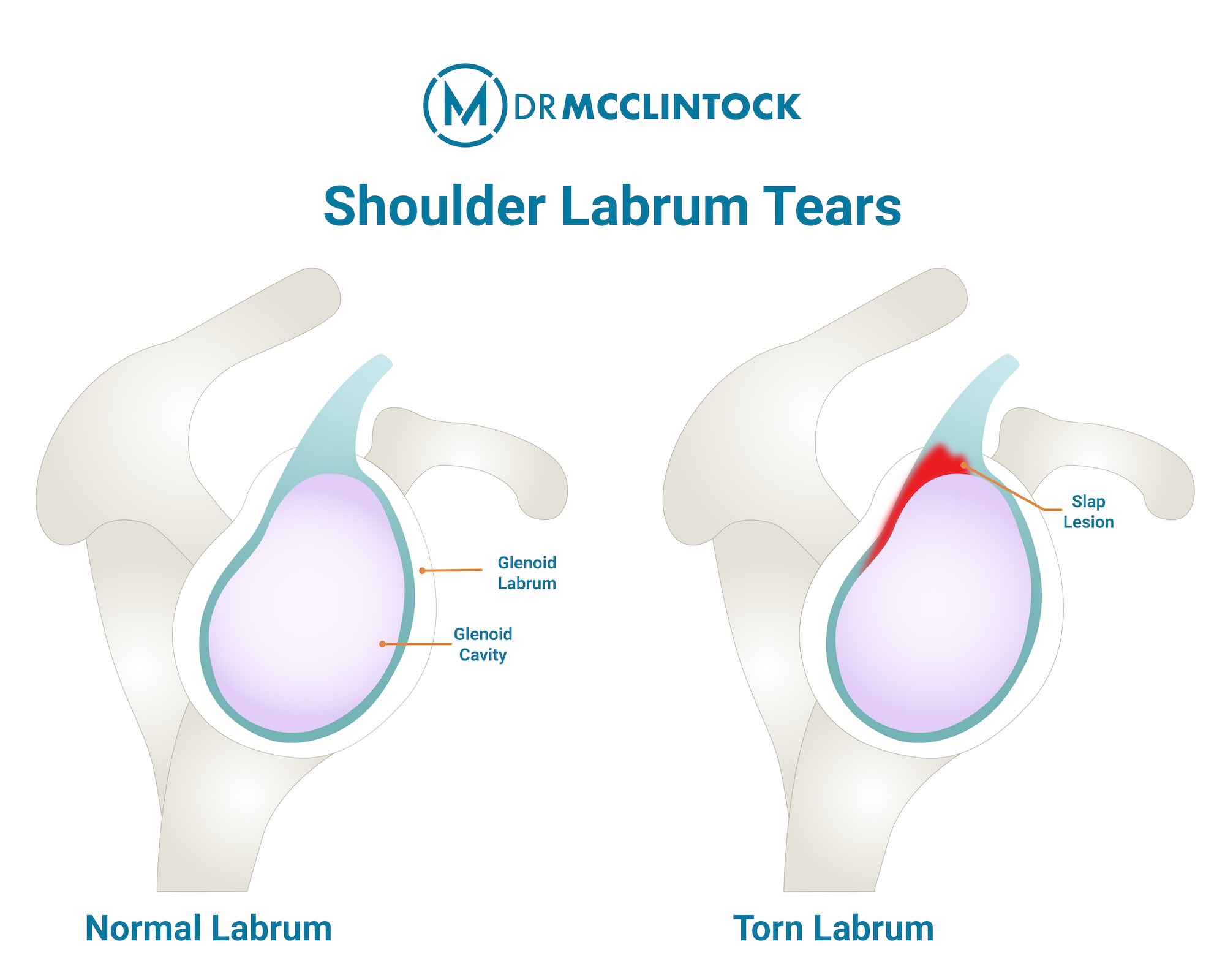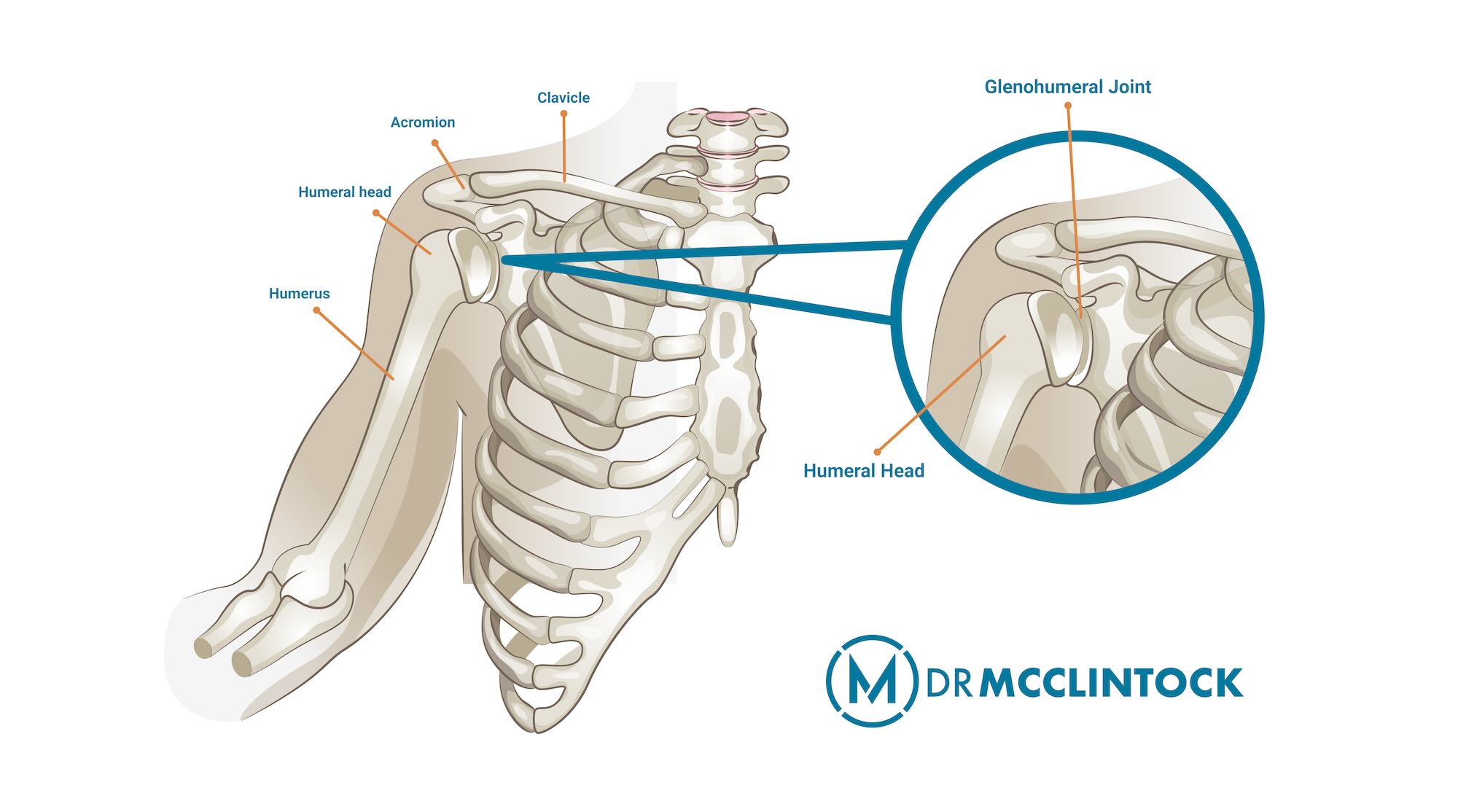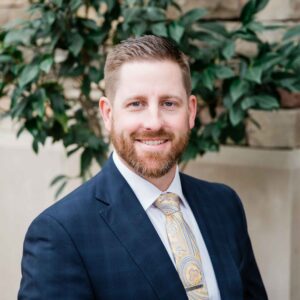A SLAP repair is surgery to fix a tear in the shoulder’s labrum. This tear can be due to repetitive motions or trauma. The procedure, known as “what is a SLAP repair,” reattaches the torn labrum to improve shoulder stability and function.
In this post, we’ll explore the procedure, its benefits, and recovery.
Key Takeaways
- A SLAP tear is an injury to the shoulder’s labrum, causing symptoms like shoulder pain, weakness, decreased range of motion, and a popping or clicking sensation.
- SLAP repairs can be performed arthroscopically using minimally invasive techniques, involving the reattachment of the torn labrum with sutures or anchors, leading to quicker recovery and fewer complications.
- Post-surgery recovery includes a phased physical therapy program, starting with passive range-of-motion exercises and progressing to strengthening exercises, with most patients returning to full activity within five to six months.
What is a SLAP Tear?
The fibrocartilage lining the shoulder socket, known as the labrum, is essential for shoulder stability and function. SLAP, which stands for ‘superior labrum anterior to posterior’, indicates that the injury extends from the front (anterior) to the back (posterior) of this attachment point.
SLAP tears are fairly common among athletes, especially those who play sports such as baseball, as these tears can occur from the repetitive, high-velocity motions involved in overhand throwing. However, SLAP tears can also result from acute trauma, such as a fall onto an outstretched arm, or from the wrenching of a shoulder during a dislocation. Whether from a chronic overuse or a sudden injury, the impact of a SLAP tear on the labrum can be profound, leading to a range of uncomfortable and limiting symptoms such as:

- Shoulder pain
- Weakness in the shoulder
- Decreased range of motion
- Popping or clicking sensation in the shoulder
- Difficulty with overhead activities
Yet, it’s not the end of the road. SLAP tears, while challenging, are not insurmountable. Advances in medical understanding and treatment have opened avenues for athletes and non-athletes alike to regain full shoulder function. Whether through conservative management or surgical intervention, the path to recovery, although demanding, is well-trodden with success.
Anatomy of the Shoulder Joint
To truly grasp the implications of a SLAP tear, one must first understand the shoulder joint’s anatomy. The shoulder is the most mobile joint in the human body. At its core is the ball and socket joint configuration, with the ball of the upper arm bone (humerus) fitting snugly into a shallow socket on the shoulder blade (scapula) known as the glenoid cavity.

The glenoid cavity is rimmed by the glenoid labrum, which deepens the socket and aids in stabilizing the humeral head. This labrum, vulnerable to tears, is the focus of our discussion. The shoulder joint is further reinforced by the rotator cuff, which not only ensures stability but also facilitate the impressive range of motion shoulders are known for.
But this mobility comes at a price; the shoulder’s complexity makes it susceptible to injury. The labrum, which also serves as the attachment point for the biceps tendon, can tear, undermining the shoulder’s stability.
Symptoms of a SLAP Tear
Amid the dense network of the shoulder’s anatomy, a SLAP tear makes its presence known through a distinctive set of symptoms. The most prominent is shoulder pain, which can manifest sharply during certain movements, such as lifting heavy objects or performing overhead activities. This pain can be elusive, sometimes felt deep within the shoulder joint or at the back, and in some cases, radiating to the front if the biceps tendon is also compromised.
Beyond the pain, those afflicted may experience a clicking or catching sensation within the joint, as if something is out of place—a telltale sign of a torn labrum. Labrum tears can cause these unsettling sensations, coupled with a restricted range of motion, transforming simple tasks into challenges and diminishing an individual’s ability to participate in sports or even perform daily activities.
The convergence of these symptoms—pain, limited movement, and mechanical joint issues—serves as a clarion call for medical intervention. Recognizing these signs is the first step in addressing a SLAP tear and steering towards the path of recovery.
Diagnosing a SLAP Tear
When the warning signs of a SLAP tear emerge, it’s time to seek clarity through diagnosis. The process begins with a conversation; a detailed medical history provides context, bringing into relief the events that may have led to the injury. A physical examination further refines the picture, as the orthopedic surgeon assesses for pain, instability, and the necessity for additional testing.
Imaging techniques bring technology into play, with MRI scans offering a non-invasive look into the shoulder’s internal workings. These scans can confirm the presence of a SLAP tear and illuminate its extent. For those cases where an even more detailed image is required, an MR arthrogram can be employed. By injecting dye into the joint prior to the MRI, the resulting images are enhanced, allowing for a clearer view of the labrum and a more definitive diagnosis.
Upon a successful diagnosis, the affected individual and their medical team can craft an informed treatment strategy. Whether the path leads toward conservative management or surgical intervention, the journey to healing begins with understanding the nature and severity of the SLAP tear.
Non-Surgical Treatments for SLAP Tears
Not all journeys through a SLAP tear lead to the operating room. For some, non-surgical treatments offer a viable path toward healing. In the initial stages, rest is paramount, sometimes necessitating a sling or brace to immobilize the shoulder and prevent further aggravation of the injury. Steering clear of activities that induce pain, such as overhead movements, is also crucial during this period.
The arsenal of non-surgical interventions includes:
- Medications, such as anti-inflammatory drugs like ibuprofen, which can alleviate pain and reduce swelling
- Therapies, such as corticosteroid injections, nerve block, and platelet-rich plasma injections, which can provide a more potent anti-inflammatory effect for persistent discomfort or stimulate healing with growth factors, for those seeking a regenerative approach
These interventions are aimed at managing symptoms and promoting healing.
Physical therapy plays a central role in non-surgical treatment, focusing on:
- Strengthening the muscles around the shoulder to offload stress from the injured labrum
- Guided exercises to restore strength, endurance, and a pain-free range of motion
- Gradually reclaiming the full function of the shoulder
A therapist will guide patients through these exercises to help them regain strength and mobility in their shoulder.
What Is a SLAP Repair?
When non-surgical methods have been exhausted, or the injury is too severe, SLAP repair surgery, also known as slap tear surgery, becomes the treatment plan for restoring shoulder integrity. This surgical procedure is aimed at mending the tear in the labrum, encouraging the damaged tissue to heal and reattach to the bone. Modern medicine allows for this to be performed arthroscopically, meaning it’s less invasive, using small incisions and specialized instruments to navigate the shoulder structures.
During the procedure, the orthopedic surgeon carefully removes any frayed edges of the labrum or reattaches the tendon using small anchors and sutures if the tear is severe. The patient is positioned to give the best access to the shoulder, and portals are created to allow the arthroscope and instruments to enter the joint. This minimally invasive approach can have significant advantages such as reduced pain, minimal blood loss, fewer complications, and quicker recovery times.
The goal of SLAP repair surgery is clear: to secure the labrum to the bone and set the stage for the healing process. With the surgery complete, the patient can look forward to a gradual return to the activities they love, supported by a detailed recovery plan.
Recovery After SLAP Repair Surgery
Once the surgical tape is set and the anesthesia fades, the true work of recovery begins. The first weeks after SLAP repair surgery are a time of healing and patience. The shoulder, cradled in a sling, must be protected and allowed to rest. This period of immobilization is crucial, as the body begins the process of knitting the labrum back to the bone.
Gradually, life begins to return to normal. Here are some guidelines for different activities after surgery:
- Desk jobs: You can usually return to desk jobs after one or two weeks.
- Strenuous occupations: More strenuous occupations may require a longer hiatus.
- Driving: Driving is put on pause during sling use.
- Running: You can resume running at six weeks.
- Swimming: You can resume swimming at three months.
- Throwing athletes: Throwing athletes can expect to gear up for early interval throwing a few months post-op, provided their recovery is on track.
With each passing month, the milestones of recovery are reached, and the shoulder grows stronger. By five to six months, a full return to activities is generally on the horizon, a testament to the resilience of the human body and the power of modern surgical techniques.
Physical Therapy Post-Surgery
Physical therapy is key to help rebuild the shoulder’s strength and flexibility. Starting with passive range-of-motion exercises, the initial stages of therapy are gentle, coaxing the joint back to life without strain. As the sling is discarded and active movements commence, the shoulder starts to regain its old capabilities.
The middle phase of therapy amps up the challenge. Resistance exercises enter the regimen, focusing on the muscles that support the shoulder, provided adequate motion has been restored. These exercises are designed to target key areas, fortifying the shoulder against future injury. By the 12-week mark, strengthening exercises take center stage, preparing the shoulder for the demands of daily life and competitive sports.
For the athlete, the final phase of therapy is a return to the game. Throwing programs and contact sports resume, each movement a victory over the injury that once threatened their career.
For others, it’s about reclaiming the freedom to move without pain or limitation—a freedom worth every repetition and every moment of effort in therapy.
Summary
A SLAP tear is a complex condition that can sideline athletes and laypersons alike. Through understanding the anatomy, recognizing the symptoms, and undergoing a precise diagnosis and treatment—whether non-surgical or surgical—most individuals can navigate the path to recovery.
Frequently Asked Questions
What exactly does ‘SLAP’ stand for, and why is it significant?
SLAP stands for ‘Superior Labrum Anterior to Posterior’, and it is significant because it indicates a tear that affects shoulder stability and function.
Can a SLAP tear heal on its own without surgery?
In some cases, SLAP tears can heal with non-surgical treatments like rest, physical therapy, and medications, but more severe tears may require surgery to fully heal.
How long does it take to recover from SLAP tear surgery?
Recovery from SLAP tear surgery can take around 4-6 weeks with the use of a sling, and normal activities may be resumed in 5-6 months, depending on individual progress and physical therapy adherence.
Is physical therapy necessary after SLAP repair surgery?
Yes, physical therapy is crucial for restoring shoulder joint function, strength, and range of motion after SLAP repair surgery.
When can I return to sports after a SLAP repair?
You can generally return to early interval throwing and swimming at 3-4 months after SLAP repair, and resume contact sports and full sporting activities at around 5-6 months post-surgery, after a successful rehabilitation.





